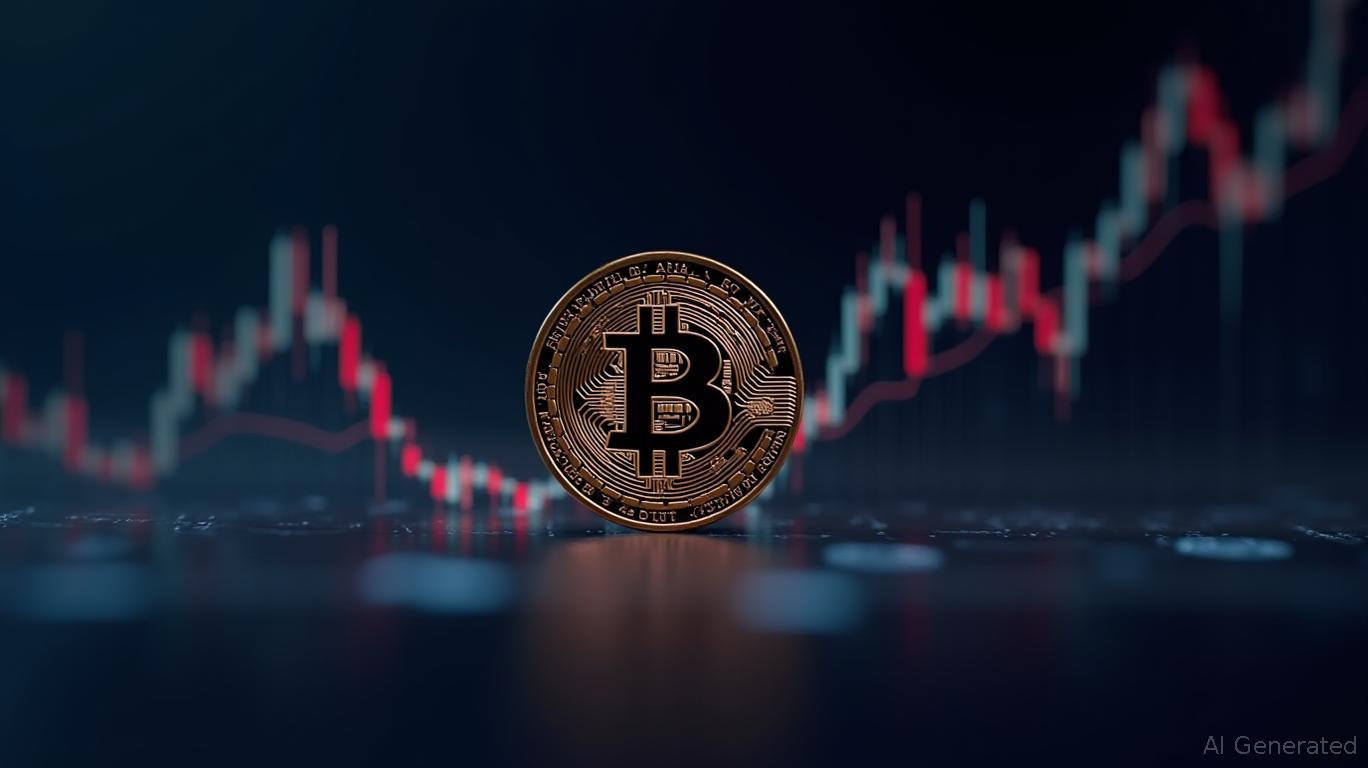Navigating Crypto Volatility in Geopolitical Storms: Is Bitcoin the New Safe Haven?
Geopolitical conflicts have long been catalysts for market upheaval, but in the cryptocurrency era, they've also become laboratories for testing the resilience of digital assets. From the Russia-Ukraine War of 2022 to the recent Israel-Iran tensions of June 2025, these crises have exposed both Bitcoin's vulnerabilities and its potential as a refuge in unstable times. For investors, the question remains: Can crypto truly rival gold as a safe haven, or does its volatility still outpace its utility?
Ask Aime: Can Bitcoin act as a safer investment during geopolitical turmoil?
Historical Volatility: Crises as Catalysts
The 2022 Russia-Ukraine War marked a pivotal moment for Bitcoin's reputation. While BTC initially dropped from $45,000 to $35,000, it surged 16% within weeks as capital fled inflationary fiat currencies and traditional markets. This pattern repeated in the 2023 Gaza War, where Bitcoin rallied 70% from post-crisis lows. Even in June 2025, during heightened Israel-Iran tensions, Bitcoin briefly dipped to $105,000—only to rebound swiftly as institutional buyers like MicroStrategy injected $1 billion into the market.
Ask Aime: Could the 2022 Russia-Ukraine War and 2023 Gaza War have made Bitcoin a new safe haven?

This data underscores a recurring theme: crypto's volatility often masks underlying demand from strategic buyers who view crises as entry points.
Institutions vs. Whales: The New Market Anchors
Institutional capital has become a stabilizing force. BlackRock's $412 million Bitcoin ETF inflow during June 2025's Middle East conflict exemplifies this trend. On-chain metrics like the Chainalysis Crypto Adoption Index reveal that Bitcoin's dips below $60,000 and Ethereum's below $3,200 trigger buying sprees by whales and ETFs—a stark contrast to retail panic selling.
“Bitcoin's correlation with equities has risen to 0.6, up from 0.2 in 2020,” notes analyst Vugar Usi Zade. “Yet its liquidity and insulation from central bank policies still make it a hedge against systemic risks.”
Gold vs. Bitcoin: The Safe-Haven Debate
While gold hit record highs during June 2025's Middle East tensions (reaching Rs 1,01,078), Bitcoin's 5% drop from $109,000 to $103,700 highlighted its risk-on characteristics. Prasanna Pathak of The Wealth Company argues, “Gold's intrinsic value and 6,000-year track record make it irreplaceable.”
But Bitcoin's defenders counter that its programmability and ETF-driven adoption are reshaping its role. Devika Mittal of Ava Labs states, “Bitcoin isn't just a store of value—it's a global one, untethered from borders or central control.”
This visual comparison shows Bitcoin's volatility but also its rapid recovery, suggesting a maturing market.
Technical Signals: When to Buy—and When to Run
Technical indicators offer actionable insights. During the June 2025 dip, Bitcoin's RSI plummeted to 28—a level historically signaling oversold conditions (e.g., the 2022 Terra crash). A crossover of the 20-day moving average above the 50-day MA could presage a bull resumption.
Risk management is critical. Experts recommend:
- Stop-losses: Set 5% below entry points to guard against equity market drag.
- Buy thresholds: Below $60k (BTC) or $3.2k (ETH) for long-term holds.
- Hedging: Pair crypto longs with inverse equity ETFs like SQQQ to offset systemic risks.
This data reveals institutional confidence, with $60 billion now in U.S. Bitcoin ETFs—a sign of legitimacy.
The Contrarian Playbook
For investors, the strategy is clear:
1. Act on dips: Use support levels ($60k, $3.2k) as entry points.
2. Monitor ETFs: Inflows signal institutional confidence; outflows demand caution.
3. Watch technicals: RSI and moving averages validate rebounds.
Long-term, Bitcoin's trajectory hinges on continued ETF growth and reduced volatility. While gold remains king, Bitcoin's evolution as a global, programmable asset positions it as a complementary safe haven—one that could rival its traditional counterpart over decades.
Final Take: Balance Risk with Resilience
Cryptocurrency markets are no longer a niche gamble—they're a critical frontier in global finance. Geopolitical crises will always create chaos, but they also unveil opportunities. For now, Bitcoin's value lies in its duality: a high-risk, high-reward asset that's becoming indispensable in turbulent times. Allocate no more than 5% of portfolios to crypto dips until broader stability emerges, but don't dismiss its role as a hedge against the unpredictable.
In a world where borders and currencies shift, Bitcoin's promise endures—one crisis at a time.

Comments
No comments yet